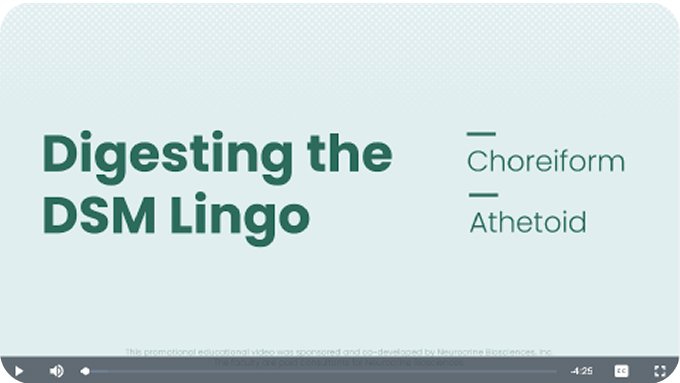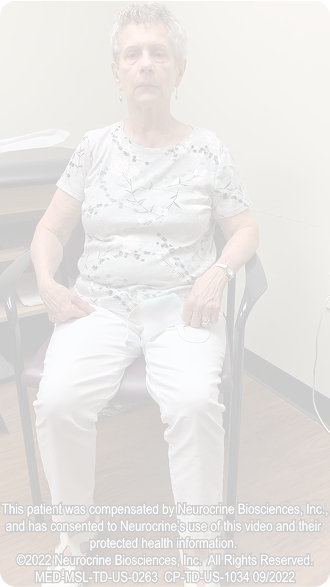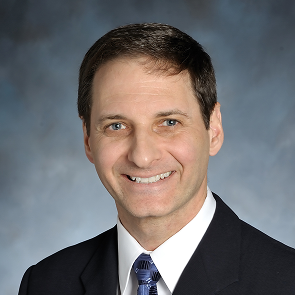

~4 mins
•Jan 2025
Digesting the DSM Lingo

This video features a brief clip from an HCP-patient interaction and is not a complete formal exam.
Would you count the movement(s) highlighted in the video toward this patient’s AIMS score?
Correct!
Yes: The movements in the video are consistent with TD and should be rated on the AIMS.
Incorrect!
Yes: The movements in the video are consistent with TD and should be rated on the AIMS.
Expert Faculty Commentary

Robert A. Hauser
MD, MBA, FAAN
Professor
Department of Neurology
Director
Parkinson's Disease and Movement Disorders Center
University of South Florida
Tampa, FL

Jonathan M. Meyer
MD
Professor
Voluntary Clinical
Department of Psychiatry
University of California San Diego
La Jolla, CA
This patient has the classic tardive dyskinesia symptoms of lip puckering and curling, grimacing, tongue thrusting, and jaw movements. All of these abnormal movements are increased during activation maneuvers, are not rhythmic, and are purposeless. They are all consistent with tardive dyskinesia. These orofacial movements should be included in this patient’s AIMS score. There are also some neck movements during activation that appear, like the chin being pulled down, which is consistent with TD. It is unclear if the eyebrow elevations seen in the video are aspects of normal expressive movements seen during speech.

Richard M. Trosch
MD
Associate Professor
Department of Neurology
Oakland University Medical School
Rochester, MI
This patient has complex repetitive jaw, tongue, and lip movements, including lip curling, pursing, puckering, bridling (retracting the corners of her mouth), and lip smacking, all increasing with activation maneuvers. She has intermittent jaw protrusion and facial grimacing. She also has tongue protrusion, tongue darting, and lip licking movements. With activation, she develops dystonic anterocollis (chin pulling down toward her chest). All of these movements are consistent with tardive dyskinesia and would be scored during her AIMS exam.
This patient’s abnormal movements are dominated by lip puckering and inward lip curling. These are repetitive (but not rhythmic like tremor) and purposeless movements, which are consistent with tardive dyskinesia and should be rated during an AIMS exam. The patient also has prominent tongue movements, including tongue protrusions, even while speaking. These movements are also consistent with tardive dyskinesia and should be rated. These movements are not patterned and are more random in appearance, as sometimes there is protrusion to one side or the other, swiping across the mouth. It would be interesting to observe the tongue with the mouth open, in which case we would likely see the movements more clearly.
Another point to note in this video is that the patient has some eyebrow elevations. While this type of movement can also be a part of tardive dyskinesia, in the video these occur mostly while speaking and are likely normal movements of expression. Based on what we’re seeing in this video, I don’t think there is enough evidence of abnormal movements to warrant an abnormal AIMS rating in the upper face, but I would be watching these areas closely during a real exam to make sure I’m not missing anything.
Finally, note that although it may be important to see how movements affect and persist with speaking, speaking will often suppress involuntary movements, and it is important to observe the patient while not speaking as well.